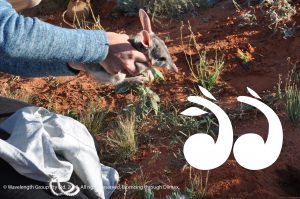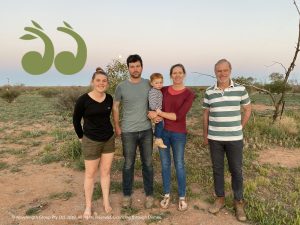Bilbies Reintroduced Into NSW
By Sue Abbott
IN the far north western corner of New South Wales, in fact just next door to Cameron Corner, an ambitious attempt to reintroduce small native marsupials back to the New South Wales Bush is being undertaken by the University of New South Wales (UNSW) and Ecological Horizons in partnership with the NSW Government.
Whilst still in existence in other parts of Australia, the bilby is locally extinct in New South Wales after being wiped out by cats and foxes … however that is all about to change.
Under the expert guidance of Professor Richard Kingsford who is leading the Wild Deserts Project and is the director of UNSW’s Centre for Ecosystem Science, ten bilbies were released at Wild Deserts, Sturt National Park, on September 11, 2020.
“Before being released at Wild Deserts in September, the ten bilbies (five female and five male) were bred in the wild area referred to as ‘The Sanctuary’ at Taronga Western Plains Zoo, so that they would not become used to humans,” said Professor Kingsford.

A partnership between the NSW Government, University of New South Wales (UNSW) and Ecological Horizons plans to reintroduce bilbies into the wild. Photo by Sue Abbott.
“The project has been a long time in the planning, and back in 2016, the University of New South Wales (UNSW) secured a ten year tender from the New South Wales Government, funded from the ‘Saving Our Species’ programme.”
Dr Reece Pedler and Dr Rebecca West were recruited to be the project coordinator and the project ecologist respectively for the Wild Deserts project, and between the pair of them they run everything on the ground including all the exclusion fencing, wild animal control down to the ‘wrangling’ of bilbies.
The couple are supported by an executive management committee with expertise in reintroduction of animals back into the wild, adaptive management, plant ecology and restoration ecology. They also have the support of temporary staff such as Ms Hannah Nicols, a student at the University of Tasmania, along with many willing volunteers.
Working with NSW National Parks and Wildlife Services as well as the local community, the planning of the project included among other things detailed design of the fencing around the two planned exclosures, along with significant control and removal of feral cats, foxes, rabbits, and pigs in two exclosure areas. Since the completion of the fencing around the two 2,000-hectare exclosures, these two areas are now free from all feral animals.
“The two exclosures have been named ‘Thipa,’ a Wongkumara name for ‘alive’, and ‘Mingku’, a Maljangpa name for ‘happy,’” explained Professor Kingsford, “and the plan is to get these small mammals back out into to the wild in the two exclosures.”
“We aim to build up the numbers of seven locally extinct species (greater bilbies, crest-tailed mulgaras, stick nest rats, western barred bandicoots, golden bandicoots, brush-tailed bettongs and western quolls) in the exclosures before they are let out in the Wild Training Zone where there are going to be a few cats because it is so large.”
The Wild Training Zone is a vast swathe of land of 100 km2 in Sturt National Park fencing off the north west corner of New South Wales attached to the dingo fence in Queensland and South Australia, and it is in here that the bilbies and the other small mammals will first try their luck at living in the wild. The team aims to control the cats to lower enough levels that the threatened species can survive.

The Wild Desert team. L-R: Hannah Nichols, University of Tasmania student, Dr Reece Pedler, Dr Rebecca West (with Isla) and Professor Richard Kingsford. Photo by Sue Abbott.
“The idea is to reach a magic level of some predators so hopefully these small Australian mammals acquire ‘predator awareness’ to have a chance to survive,” said Professor Kingsford.
At the heart of the Wild Deserts project is restoration of desert ecosystems through plants and invertebrates and soil health, and since September 2020 the newly released bilbies.
For more information click here and here.
Sue Abbott is a ratepayer and resident of Scone, as well as a councillor for the Upper Hunter Shire Council. This post is written in her personal capacity and does not represent the views of organisations she is, or has previously been, affiliated with.
Tags: Bilbies, bilby, Stuart National Park, Wild Deserts
 scone.com.au
scone.com.au